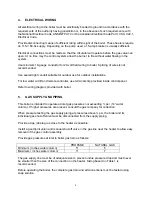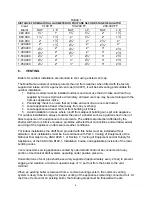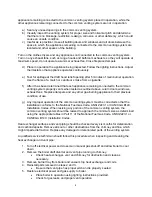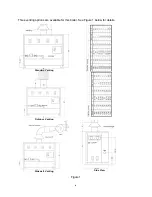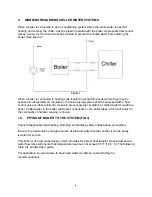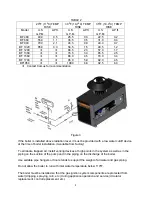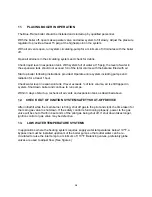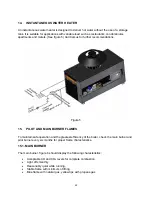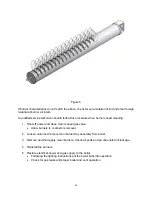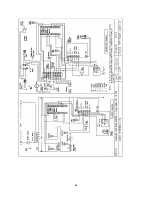
5
appliance remaining connected to the common venting system placed in operation, while the
other appliances remaining connected to the common venting system are not in operation.
a) Seal any unused openings in the common venting system.
b) Visually inspect the venting system for proper size and horizontal pitch and determine
that there is no blockage, restriction, leakage, corrosion or other deficiency, which could
cause an unsafe condition.
c) Insofar as is practical, close all building doors and windows and all doors between the
space in which the appliances remaining connected to the common venting system are
located and other spaces of the building.
Turn on the clothes dryers and any appliances not connected to the common venting system.
Turn on any exhaust fans, such as range hoods and bathroom exhausts, so they will operate at
maximum speed, do not operate a summer exhaust fan. Close fireplace dampers.
d) Place in operation the appliance being inspected. Follow the lighting instructions. Adjust
thermostat so that appliance operates continuously.
e) Test for spillage at the draft hood relief opening after 5 minutes of main burner operation.
Use the flame of a match or candle or smoke from a cigarette.
f) After it has been determined that each appliance remaining connected to the common
venting system properly vents when tested as outlined above, return doors, windows,
exhaust fans, fireplace dampers and any other gas-burning appliance to their previous
condition of use.
g) Any improper operation of the common venting system must be corrected so that the
installation conforms to the National Fuel Gas Code, ANSI Z223.1 or CAN/CGA B149,
Installation Codes. When resizing any portion of the common venting system, the
common venting system should be resized to approach the minimum size as determined
using the appropriate tables in Part 11 of the National Fuel Gas Code, ANSI Z223.1 or
CAN/CGA B149, Installation Codes.
Heat exchanger surfaces and vent piping should be checked every six months for deterioration
and carbon deposits. Remove all soot or other obstructions from the chimney and flue, which
might impede draft action. Replace any damaged or deteriorated parts of the venting system.
A qualified service technician should follow this procedure when inspecting and cleaning the
heat exchanger and vent pipe.
1. Turn off electrical power and close main manual gas shut-off and allow boiler to cool
down
2. Remove the boiler draft diverter and vent pipe running to chimney.
•
Check heat exchanger, vent and chimney for obstruction and clean as
necessary.
3. Remove burner tray from boiler and vacuum top heat exchanger and coils.
4. Reinstall parts removed in steps 2 and 3.
•
Be sure that vent pipe has proper pitch and is properly sealed.
5. Restore electrical power and gas supply to boiler.
•
Place boiler in operation using lighting instructions provided.
•
Check for gas leaks and proper vent operation.
Summary of Contents for BLUE-FLAME Series
Page 21: ...19...
Page 22: ...20...
Page 23: ...21 21 EXPLODED VIEW...





